Introduction:
Enniskillen, a picturesque town nestled on an island in the heart of County Fermanagh, Northern Ireland, boasts a rich and fascinating history spanning over six centuries. From its early origins as a strategic stronghold of the Maguire clan to its pivotal role in the military and political events that shaped Irish history, Enniskillen has been a witness to the island’s complex past. This article explores the captivating story of Enniskillen, tracing its evolution from a medieval Gaelic settlement to a thriving modern town.
Contents
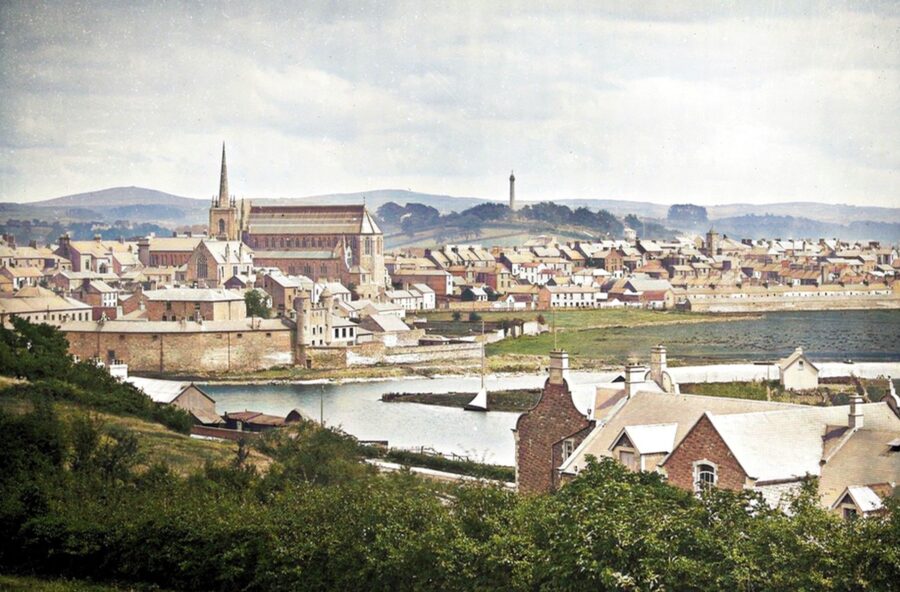
Early History and Origins
Etymology of Enniskillen name
The name Enniskillen derives from the Irish Inis Ceithleann, which translates to “Ceithlenn’s Island.” According to local legend, Ceithlenn, a figure from Irish mythology, was wounded in battle and attempted to swim across the River Erne. She never reached the other side, and the island was named in her memory. Over the centuries, the name has seen various anglicized spellings, including Iniskellen, Iniskellin, and Inishkillen, before settling on its current form, Enniskillen.
Maguire clan stronghold in the 15th-16th centuries
Enniskillen’s strategic location on the River Erne made it an important stronghold for the Maguire clan, who ruled the kingdom of Fermanagh during the 15th and 16th centuries. The Maguires, a powerful Gaelic aristocratic family, established their dominance in the region and built a castle on the island to control the vital river crossing. The earliest recorded mention of the castle dates back to 1439 in the Annals of Ulster, highlighting its significance as a defensive structure. Throughout the 16th century, Enniskillen Castle served as a focal point for the Maguires’ resistance against English incursions into Ulster. The castle withstood several sieges, including a notable one in 1593-94, as the Maguires fought to maintain their control over the region. However, the increasing pressure from English forces during the Nine Years’ War (1593-1603) eventually led to the decline of the Maguires’ power, paving the way for a new era in Enniskillen’s history.
Enniskillen Castle
Founded by Hugh ‘The Hospitable’ Maguire in the 1420s
Enniskillen Castle, the iconic symbol of the town’s resilience and rich history, was founded by Hugh ‘The Hospitable’ Maguire in the early 15th century. As the ruling Maguire dynasty sought to strengthen their control over the region, Hugh Maguire recognized the strategic importance of the island location and constructed a fortification that would become the nucleus of Enniskillen’s development. The exact date of the castle’s founding is uncertain, but historical records suggest it was built sometime in the 1420s, making it one of the oldest surviving structures in the area.
Strategic crossing point and pass into Ulster
Enniskillen Castle’s location on the River Erne was crucial to its strategic significance. The river served as a natural boundary between the provinces of Ulster and Connacht, and the narrow crossing point at Enniskillen was one of the few routes into the heart of Ulster. Control of this passage was essential for the Maguires to maintain their dominance and protect their territory from rival clans and English encroachment. The castle’s position also allowed the Maguires to monitor and regulate trade along the river, further cementing their economic and political power in the region.
Sieges and battles in the 16th-17th centuries
During the tumultuous years of the 16th and 17th centuries, Enniskillen Castle faced numerous sieges and battles as the Maguires fought to defend their stronghold against the growing English presence in Ireland. In 1594, during the Nine Years’ War, the castle was besieged by English forces under Captain John Dowdall. Although the castle fell after a short siege, the Maguires managed to recapture it later that year. The castle was besieged again in 1595 but successfully withstood the assault.
As the English tightened their grip on Ulster in the early 17th century, Enniskillen Castle became a focal point of resistance. During the Irish Rebellion of 1641, the castle was held by Rory Maguire, who launched attacks against English settlers in the surrounding area. The castle’s defenses were put to the test once more during the Williamite War (1689-1691), when it served as a rallying point for Protestant forces loyal to King William III. The castle’s resolute stand against Jacobite troops earned Enniskillen a reputation as a bastion of Protestant resistance in Ireland.
Despite the sieges and conflicts, Enniskillen Castle remained a pivotal stronghold, adapting to the changing political landscape. Its transformation from a Maguire fortress to an English garrison in the 17th century marked a significant shift in the balance of power in the region, setting the stage for Enniskillen’s development as a key town in the Plantation era.
Plantation Era
Granted by James I to William Cole in the early 17th century
The dawn of the 17th century marked a significant turning point in Enniskillen’s history as the town became a focal point of the English Crown’s Plantation of Ulster. In 1612, King James I granted the town and surrounding lands to William Cole, an English soldier and administrator. Cole, who would later become known as the founder of Enniskillen town, was tasked with establishing a strong English presence in the region and overseeing the development of the settlement. This grant signaled the beginning of a new era, as the Maguires’ influence waned and English control over Enniskillen grew.
Development of the town during the Plantation of Ulster
Under William Cole’s leadership, Enniskillen underwent a profound transformation during the Plantation period. Cole set about strengthening the town’s defenses, remodeling and expanding the castle to serve as a symbol of English authority. He also laid the groundwork for the town’s growth by allocating land for new streets, houses, and public buildings. English and Scottish settlers were encouraged to move to Enniskillen, bringing with them their skills, trades, and Protestant faith. By 1630, the town had grown to around 180 inhabitants, predominantly English and Scottish settlers.
The town’s strategic location and its status as a garrison town contributed to its rapid development. Enniskillen became an important center for trade and commerce, with its position on the River Erne facilitating the transportation of goods and resources. The town’s market, established by royal charter in 1613, attracted merchants and traders from the surrounding areas, fostering economic growth and prosperity.
Watergate built in the Plantation period
One of the most iconic architectural features of Enniskillen Castle, the Watergate, was constructed during the Plantation era. Built in 1609 by William Cole, the Watergate served as a defensive structure and a symbol of the town’s growing importance. The Watergate, with its distinctive twin circular towers, showcased the influence of Scottish architectural styles and stood as a testament to the English Crown’s commitment to fortifying its holdings in Ulster.
The Watergate not only enhanced the castle’s defensive capabilities but also served as a visual reminder of the changing political landscape. Its construction marked a shift from the Maguires’ Gaelic stronghold to an English-controlled garrison town. The Watergate’s impressive architecture and strategic location made it a landmark feature of Enniskillen, enduring as a symbol of the town’s resilience and adaptability.
Throughout the Plantation period, Enniskillen continued to grow and prosper, solidifying its position as a key town in the region. The influx of settlers, the expansion of trade, and the strengthening of its defenses all contributed to Enniskillen’s transformation from a Gaelic stronghold to a thriving Plantation town. This period laid the foundation for Enniskillen’s future development and its role in the turbulent events of the 17th century.
17th Century Conflicts
Enniskillen’s role in the Irish Rebellion of 1641
As tensions between the native Irish and English settlers grew in the early 17th century, Enniskillen found itself at the center of the Irish Rebellion of 1641. The rebellion, which began as an attempt by the Irish Catholic gentry to seize control of the English administration in Ireland, quickly spread throughout the country. In Fermanagh, Rory Maguire, a prominent member of the Maguire clan, led the rebel forces and launched attacks on English settlers in the area.
During this tumultuous period, Enniskillen Castle played a crucial role in the defense of the town and its Protestant inhabitants. The castle’s garrison, under the command of William Cole, successfully repelled attacks by the rebels, providing a safe haven for the besieged settlers. Enniskillen’s resolute defense during the rebellion cemented its reputation as a stronghold of Protestant resistance in the face of Irish Catholic insurgency.
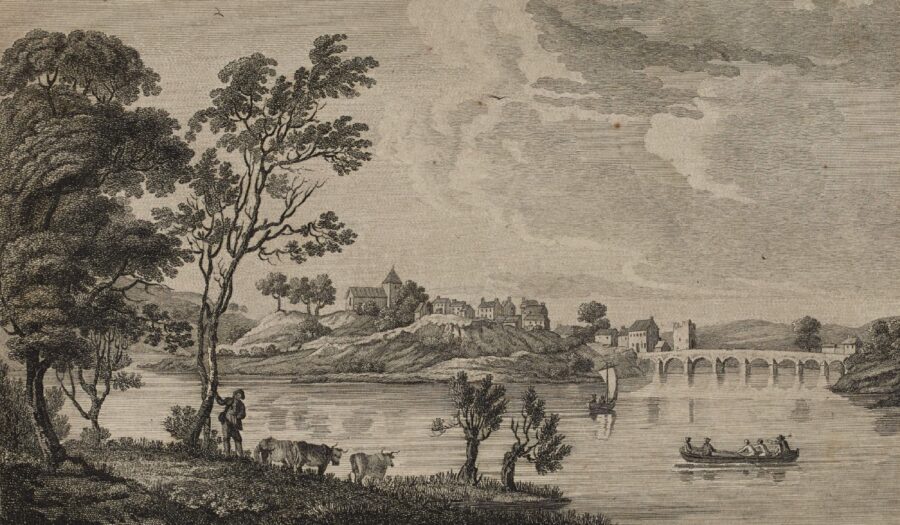
Defensive stronghold for Protestant settlers
Throughout the 17th century, Enniskillen served as a vital defensive stronghold for Protestant settlers in the region. The town’s strategic location, coupled with its fortified castle and determined garrison, made it a formidable obstacle to those seeking to challenge English control. Protestant families from the surrounding countryside often sought refuge within the town’s walls during times of unrest, relying on the protection provided by the castle and its defenders.
Enniskillen’s importance as a Protestant stronghold was further reinforced by the establishment of a Protestant community within the town. The influx of English and Scottish settlers during the Plantation era had created a sizeable Protestant population, which played a significant role in shaping the town’s political and religious identity. The shared sense of unity and purpose among the Protestant inhabitants contributed to Enniskillen’s resilience in the face of adversity.
Resisted Jacobite forces during the Williamite War in 1689-91
Enniskillen’s most famous moment of defiance came during the Williamite War, also known as the Jacobite-Williamite War, which was fought between the supporters of the Catholic King James II and the Protestant King William III. In 1689, following James II’s exile and William III’s accession to the throne, Enniskillen’s Protestant population declared their support for William and resolved to resist Jacobite forces.
Under the leadership of Gustavus Hamilton, the town’s garrison and a group of local volunteers, known as the “Enniskillen Men,” successfully defended the town against repeated Jacobite attacks. The Enniskillen Men’s bravery and skill in battle became legendary, as they not only held their ground but also launched daring raids against Jacobite positions in the surrounding area.
One of the most notable engagements of the war took place at the Battle of Newtownbutler in July 1689, where the Enniskillen Men, alongside other Williamite forces, inflicted a decisive defeat on the Jacobite army. This victory proved crucial in turning the tide of the war in favor of William III and solidifying Enniskillen’s status as a bastion of Protestant resistance.
Enniskillen’s unwavering support for the Williamite cause and its successful defense against Jacobite forces earned the town widespread acclaim and cemented its place in the annals of Irish history. The legacy of the Enniskillen Men and their heroic stand against the Jacobites continues to be celebrated and commemorated to this day.
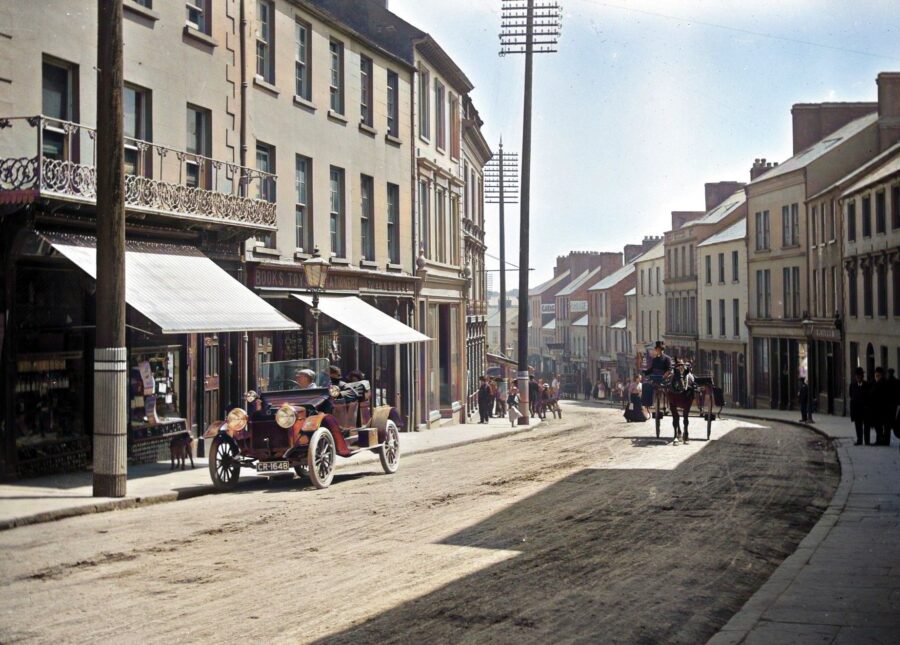
Military Town and Barracks
Town’s association with the Inniskilling Fusiliers and Dragoons regiments
Enniskillen’s rich military history is inextricably linked to two renowned regiments of the British Army: the Inniskilling Fusiliers and the Inniskilling Dragoons. The town’s name, often spelled as “Inniskilling” in military contexts, reflects its deep connection to these distinguished units. The Inniskilling Fusiliers, originally raised in 1689 during the Williamite War, traced their origins to the brave defenders of Enniskillen who resisted Jacobite forces. Similarly, the Inniskilling Dragoons, a cavalry regiment formed in 1689, drew their name and inspiration from the town’s steadfast resistance.
Throughout the 18th and 19th centuries, Enniskillen served as a primary recruiting ground for both regiments, with many local men enlisting to serve in their ranks. The Inniskilling Fusiliers and Dragoons earned a reputation for their bravery, loyalty, and skill on battlefields across the globe, participating in numerous conflicts including the Napoleonic Wars, the Crimean War, and the Boer Wars. The regiments’ close ties to Enniskillen fostered a strong sense of pride and identity within the town, cementing its status as a military stronghold.
Conversion of castle to barracks in the 18th-19th centuries
As Enniskillen’s military importance grew, the town’s iconic castle underwent a significant transformation. In the late 18th century, the castle was converted into a military barracks to accommodate the increasing number of troops stationed in the area. The adaptation of the castle’s ancient walls and towers to serve as a modern garrison showcased Enniskillen’s commitment to its military role and its ability to evolve with the changing times.
Throughout the 18th and 19th centuries, the castle barracks housed various regiments, including the Inniskilling Fusiliers and Dragoons, as well as other units of the British Army. The presence of a substantial military force within the town contributed to its economic growth and social fabric, as soldiers and their families became an integral part of Enniskillen’s community. The barracks also served as a focal point for military training, drills, and ceremonies, reinforcing the town’s identity as a bastion of British military presence in Ireland.
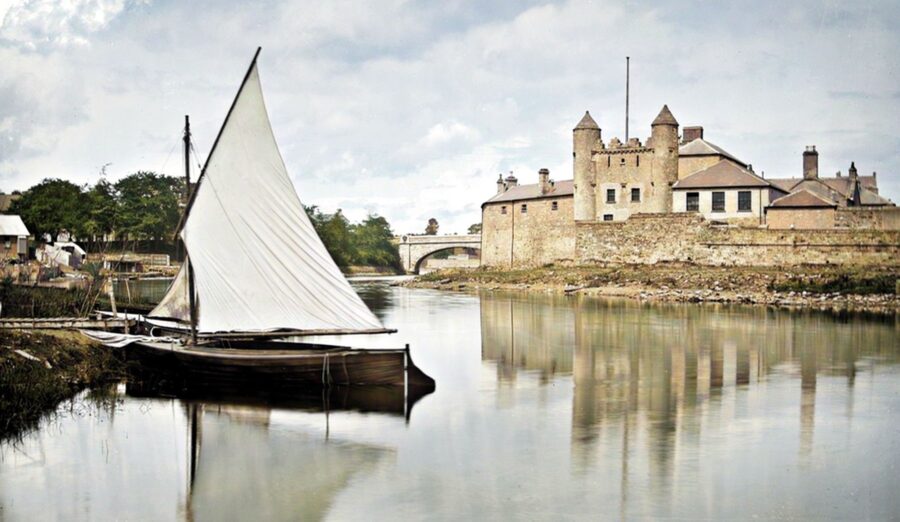
Military presence up through World War II
Enniskillen’s military significance endured well into the 20th century, particularly during the Second World War. The town’s strategic location and established military infrastructure made it an important hub for the British war effort. The castle barracks continued to serve as a base for regiments preparing for deployment, while nearby facilities were utilized for training and logistical support.
During the war, Enniskillen also played a role in the defense of Northern Ireland against potential German invasion. The town’s proximity to the western coast and its position along key transport routes made it a vital link in the network of defenses established to protect the region. Local volunteers and reservists worked alongside regular military personnel to maintain a state of readiness and contribute to the war effort on the home front.
The enduring military presence in Enniskillen throughout the first half of the 20th century left an indelible mark on the town’s character and identity. The shared experiences of wartime sacrifice, camaraderie, and resilience forged strong bonds within the community and deepened the town’s connection to its military heritage. Today, the legacy of Enniskillen’s military past is preserved through memorials, museums, and the cherished memories passed down through generations, ensuring that the town’s proud martial spirit remains an integral part of its cultural fabric.
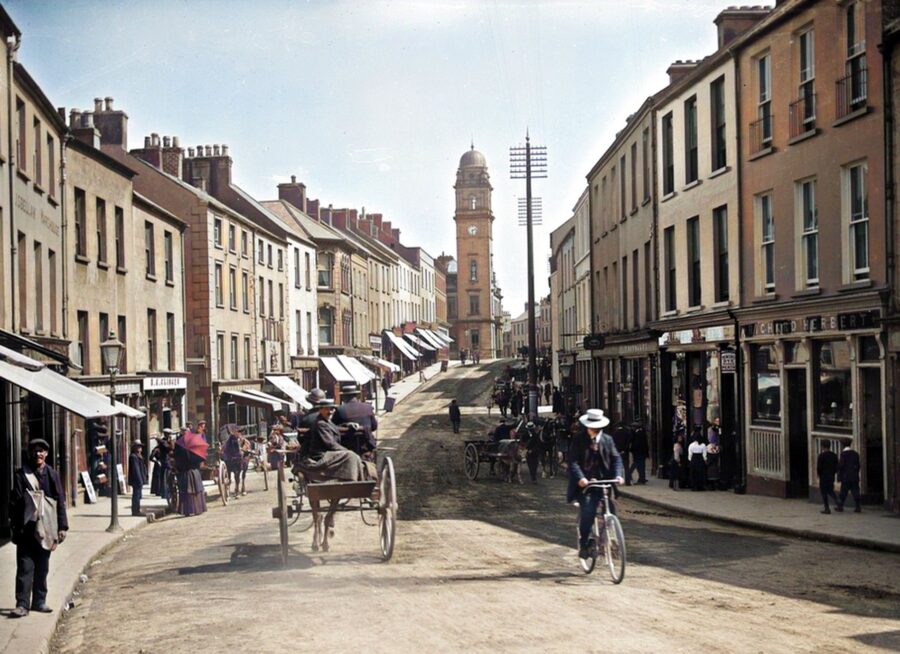
The Troubles and Reconciliation
IRA bombing in 1987 as a tragic turning point
Enniskillen, like many other towns in Northern Ireland, was not spared from the violence and turmoil of The Troubles, a period of conflict that lasted from the late 1960s to the late 1990s. The most tragic event to befall the town during this time was the devastating IRA bombing on Remembrance Sunday, 8th November 1987. The explosion, which occurred during a ceremony honoring war veterans at the town’s cenotaph, claimed the lives of 11 civilians and injured scores more.
The Enniskillen bombing sent shockwaves through the community and the entire country, serving as a somber reminder of the human cost of the ongoing conflict. The indiscriminate nature of the attack, which targeted a peaceful gathering of mostly elderly people, was widely condemned by all sides. The tragedy became a catalyst for change, as people from both the Catholic and Protestant communities united in their grief and their determination to prevent such atrocities from happening again.
Community coming together across divides
In the wake of the bombing, Enniskillen’s residents demonstrated remarkable resilience, compassion, and unity. The town’s response to the tragedy became a symbol of hope and reconciliation amidst the darkness of The Troubles. People from all backgrounds came together to support the victims’ families, attend funerals, and participate in community-led initiatives aimed at fostering peace and understanding.
The spirit of cooperation and shared purpose that emerged in Enniskillen inspired others across Northern Ireland to work towards ending the cycle of violence. The town’s experience showcased the power of grassroots efforts in bridging divides and promoting reconciliation at a time when political progress seemed elusive. Enniskillen’s commitment to peace and its rejection of sectarianism served as a beacon of hope, demonstrating that a brighter future was possible through dialogue, empathy, and a willingness to move forward together.
Recognized as Best Kept Town in 2000
Enniskillen’s journey from a town scarred by tragedy to a model of reconciliation and progress was recognized in 2000 when it was awarded the title of “Best Kept Town” in Ireland. This prestigious accolade acknowledged the tireless efforts of the town’s residents in not only maintaining the physical beauty of their surroundings but also in nurturing a spirit of community and inclusivity.
The award celebrated Enniskillen’s successful initiatives in promoting cross-community cooperation, such as joint cultural events, shared public spaces, and collaborative projects. These efforts helped to break down barriers, foster understanding, and create a more cohesive and harmonious society. The recognition as Best Kept Town was a testament to the transformative power of Enniskillen’s collective determination to build a better future for all its citizens.
Enniskillen’s journey through the darkest days of The Troubles and its emergence as a beacon of reconciliation serves as an inspiring example of the human capacity for healing, forgiveness, and progress. The town’s experiences underscore the importance of open dialogue, empathy, and a shared commitment to peace in overcoming even the most entrenched divisions. As Enniskillen continues to move forward, its story remains a powerful reminder of the resilience of the human spirit and the potential for communities to triumph over adversity when they stand together.
Enniskillen Today
Museums at Enniskillen Castle showcasing town and county history
Today, Enniskillen Castle stands as a proud symbol of the town’s rich history and a focal point for cultural exploration. The castle complex houses two prestigious museums that showcase the fascinating heritage of Enniskillen and the wider County Fermanagh. The Fermanagh County Museum, located within the castle grounds, offers visitors a comprehensive overview of the region’s history, from ancient times to the present day. Exhibits include artifacts, photographs, and interactive displays that bring the past to life, highlighting key events, notable figures, and the everyday experiences of the people who shaped Fermanagh’s distinct identity.
Alongside the county museum, the Inniskillings Museum pays tribute to the town’s illustrious military heritage. Dedicated to the renowned Inniskilling Fusiliers and Inniskilling Dragoons regiments, the museum chronicles the exploits and sacrifices of these brave soldiers through a collection of uniforms, weapons, medals, and personal memorabilia. Visitors can explore the regiments’ storied histories, from their formation in the 17th century to their global campaigns and their enduring legacy. Together, these museums provide a immersive journey through Enniskillen’s past, offering insights into the town’s pivotal role in the tapestry of Irish history.
Center for exploring Fermanagh’s lakeland region
Enniskillen’s strategic location at the heart of County Fermanagh’s stunning lakeland region makes it an ideal base for exploring the area’s natural wonders. The town sits on the banks of the picturesque River Erne, which connects the Upper and Lower Lough Erne, two of the largest lakes in Ireland. These waterways, dotted with numerous islands and fringed by lush green landscapes, provide a paradise for outdoor enthusiasts and nature lovers.
From Enniskillen, visitors can embark on boat tours, kayaking expeditions, and fishing trips to discover the hidden gems of the Fermanagh Lakelands. The town also serves as a gateway to the nearby Marble Arch Caves Global Geopark, a UNESCO-recognized site renowned for its subterranean caverns, rugged hills, and ancient forests. With its a array of accommodation options, restaurants, and tourist services, Enniskillen provides a welcoming and conveniently located center for those seeking to immerse themselves in the beauty and tranquility of Ireland’s lakeland country.
Attractions like Marble Arch Caves and monastic sites
In addition to its vibrant town center and lakeland setting, Enniskillen is surrounded by a wealth of cultural and historical attractions that draw visitors from far and wide. The Marble Arch Caves, located just a short drive from the town, are a must-see for anyone exploring the region. This extensive underground network of caves, carved by the relentless flow of rivers over millions of years, features stunning formations of stalactites, stalagmites, and subterranean waterways. Guided tours lead visitors through the awe-inspiring chambers, offering a glimpse into a hidden world beneath the Earth’s surface.
For those interested in the region’s rich monastic heritage, Enniskillen serves as a convenient base for exploring the numerous ancient religious sites scattered throughout County Fermanagh. One notable example is Devenish Island, a short boat ride from the town, which is home to the ruins of a 6th-century monastery founded by Saint Molaise. The island’s well-preserved round tower and medieval church provide a fascinating insight into the early Christian history of Ireland. Other significant monastic sites within easy reach of Enniskillen include White Island, with its enigmatic stone figures, and Inishmacsaint, known for its 12th-century high cross and tranquil setting.
As Enniskillen looks to the future, it remains committed to preserving and celebrating its unique heritage while embracing progress and innovation. The town’s museums, cultural attractions, and stunning natural surroundings continue to draw visitors from around the world, ensuring that Enniskillen’s story is shared with new generations. With its warm hospitality, vibrant community spirit, and enduring resilience, Enniskillen stands as a shining example of a town that has triumphed over adversity and emerged stronger, united, and ready to face the challenges and opportunities of the 21st century.


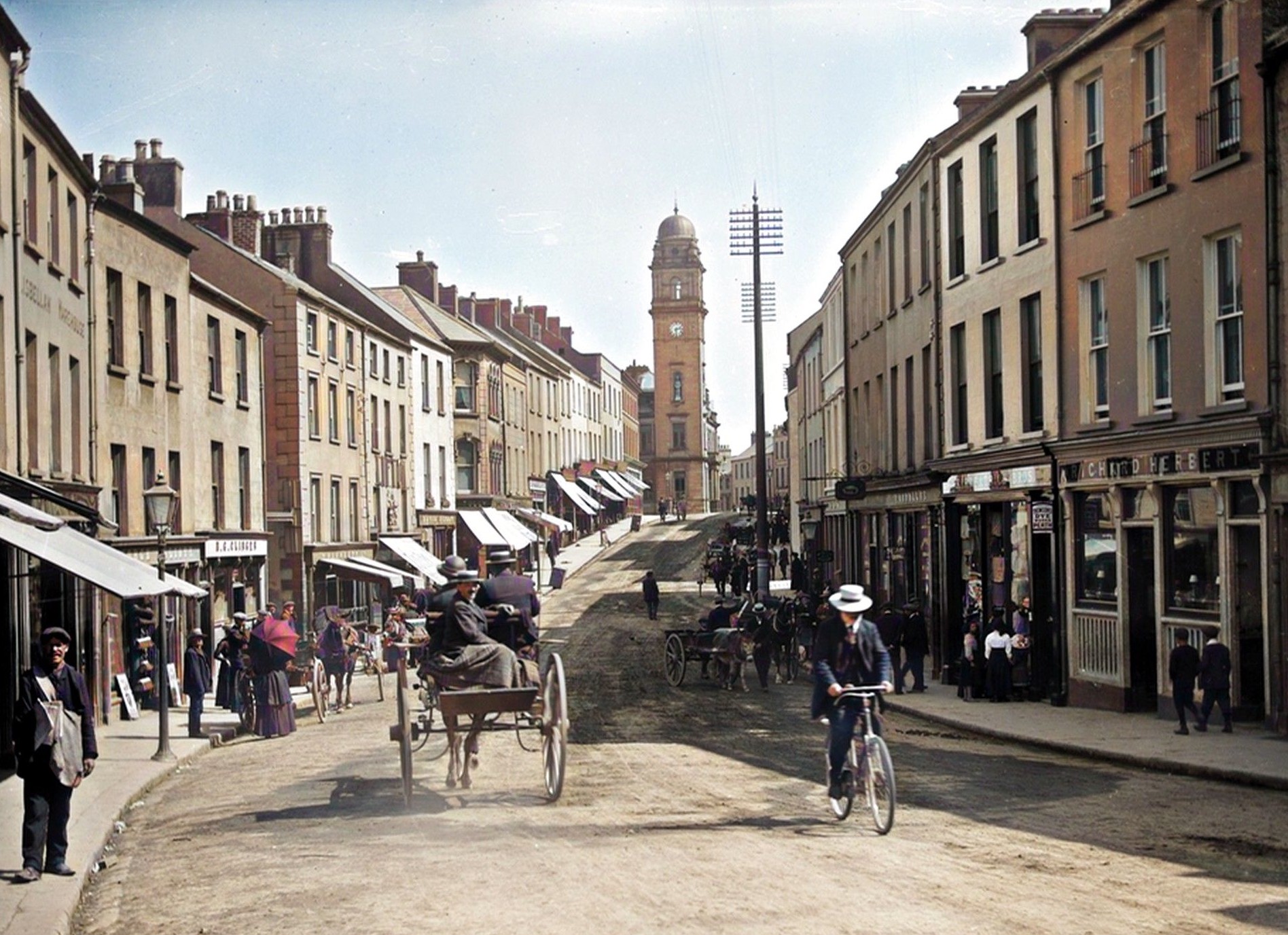
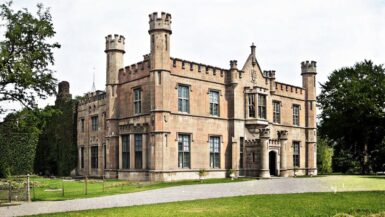
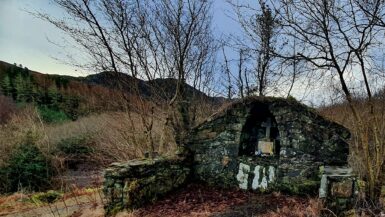
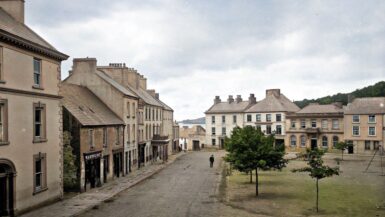
Leave a reply